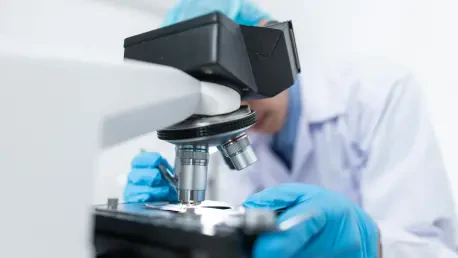Today, we’re thrilled to sit down with Laurent Giraid, a renowned technologist whose groundbreaking work in artificial intelligence is transforming the landscape of antibiotic drug discovery. With a deep focus on machine learning and natural language processing, Laurent has been at the forefront of integrating AI with biomedical research. In this conversation, we dive into the innovative discovery of enterololin, a precision antibiotic targeting gut bacteria linked to inflammatory bowel diseases like Crohn’s, the pivotal role of AI in accelerating this process, and the future of targeted antimicrobial therapies. We’ll explore how his team navigated the challenges of preserving the gut microbiome, the mechanics of AI tools in drug development, and the exciting next steps toward clinical application.
Can you share what motivated your team to develop a new antibiotic specifically for gut bacteria associated with inflammatory bowel diseases like Crohn’s?
Absolutely. We saw a pressing need for more precise treatments for conditions like Crohn’s, where broad-spectrum antibiotics often do more harm than good by wiping out beneficial gut microbes. Our inspiration came from patients who struggle with flare-ups and the worsening symptoms caused by microbiome disruption. We wanted to create something that could target harmful bacteria without collateral damage, and focusing on gut bacteria tied to inflammation became our mission. It’s a complex ecosystem, and we knew a tailored approach could make a real difference in quality of life.
Why are gut bacteria such a challenging target for antibiotics compared to other types of infections?
Gut bacteria are tricky because you’re dealing with a delicate balance of hundreds of microbial species, many of which are essential for digestion, immunity, and overall health. Unlike infections in other parts of the body where you might target a single pathogen, in the gut, you risk disrupting this balance if your drug isn’t selective. The challenge is designing a compound that can pinpoint the harmful players—like certain strains of Escherichia coli—while leaving the beneficial ones untouched. It’s like performing surgery with a scalpel instead of a hammer.
Can you explain what sets enterololin apart from traditional antibiotics like vancomycin in treating gut inflammation?
Enterololin is designed for precision. Unlike vancomycin, which is a broad-spectrum antibiotic that kills off a wide range of bacteria—good and bad—enterololin specifically targets bacteria linked to Crohn’s flare-ups, like E. coli. In our mouse studies, we saw that it suppressed these harmful microbes while preserving much of the healthy microbiome. This selective action led to faster recovery and less disruption compared to vancomycin, which often leaves the gut ecosystem vulnerable to further issues. It’s a step toward a more personalized approach to antibiotic therapy.
How does AI, particularly a tool like DiffDock, play a role in speeding up the discovery of how enterololin works at a molecular level?
AI was a game-changer for us. Normally, figuring out a drug’s mechanism of action—how it interacts with bacterial cells—can take years of trial and error. With DiffDock, a generative AI model, we drastically cut that time down to months. DiffDock predicts how small molecules like enterololin bind to specific proteins in bacteria, giving us a detailed map of potential targets. In this case, it pointed us to the LolCDE protein complex, which is critical for bacterial survival. This prediction gave us a clear starting point for lab experiments, saving us countless hours and resources.
What kinds of lab experiments did your team conduct to confirm DiffDock’s predictions about enterololin’s target?
Once DiffDock predicted that enterololin binds to the LolCDE protein complex, we designed a series of experiments to validate this. We started by creating enterololin-resistant mutants of E. coli in the lab and found that mutations in their DNA mapped directly to the LolCDE genes, just as predicted. We also used RNA sequencing to analyze which bacterial genes were affected by the drug, revealing disruptions in lipoprotein transport pathways tied to LolCDE. Additionally, we employed CRISPR to knock down LolCDE expression and observed the expected effects. Every test lined up with the AI’s hypothesis, which was incredibly validating.
Enterololin is still in early development. Can you walk us through the next steps to transform this compound into a usable treatment for patients?
Right now, we’re focused on optimizing enterololin for human use, which involves fine-tuning its chemical properties to ensure safety and efficacy. Through our spinout company, Stoked Bio, we’re working on improving its stability, absorption, and delivery in the body. We’re also conducting further preclinical studies to assess long-term effects and potential side effects. The goal is to prepare for clinical trials within the next few years, provided everything progresses smoothly. It’s a long road, but we’re committed to getting this to patients who need it.
What’s your forecast for the future of AI-driven drug discovery, especially in the realm of antibiotics?
I’m incredibly optimistic about where this is headed. AI tools like DiffDock are just the beginning—they’re already slashing timelines and costs in drug development, allowing us to tackle complex challenges like antimicrobial resistance more effectively. I believe we’ll see a wave of precision antibiotics in the coming decade, designed to target specific pathogens without harming beneficial microbes. Beyond antibiotics, AI will likely revolutionize how we approach many diseases by providing mechanistic insights faster than ever before. It’s not just about finding new drugs; it’s about understanding them deeply enough to make them safe and impactful for patients.









